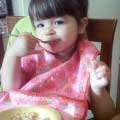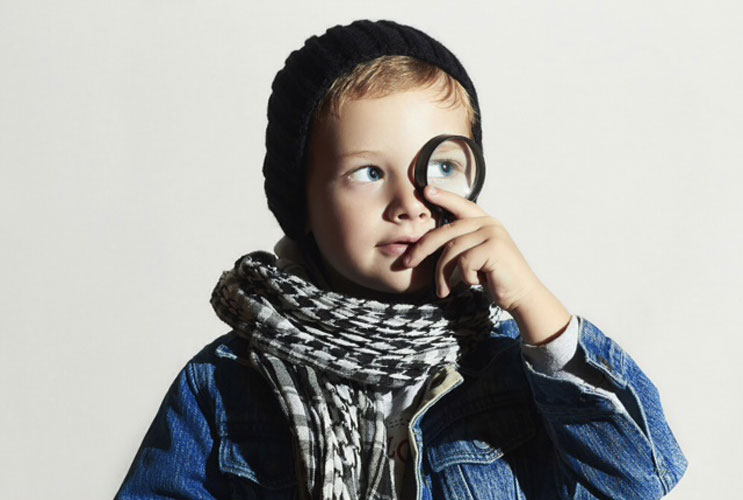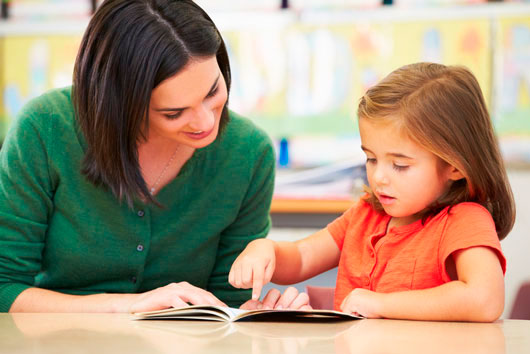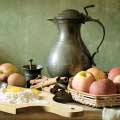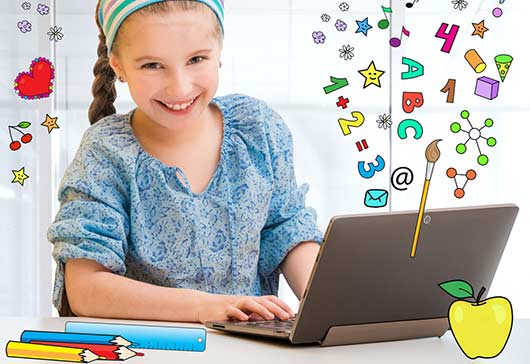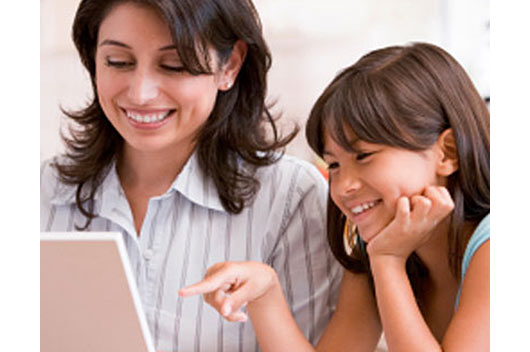
If you’re a new mom, you’ve probably gotten a slew of baby gifts that it seems like you’ll never need. I remember when friends visited me in the hospital while I was recovering from my C-section, and gifted me a baby cup, plate, spoon, knife and fork. When I looked at my helpless little infant, it was impossible to think we’d ever need these. Eating milestones arrive soon enough and one day your baby feeds herself.
Fast forward 20 months later, and we’re on our third or fourth set of baby utensils, and I’ve got a stubborn toddler who insists on feeding herself, even when it’s obvious she still needs a little help.
So while there are no hard and fast rules or timelines as to when your baby will start to feed herself, these are roughly the stages at which she’ll be able to master self-feeding skills.
Sippy cup & straws: You can offer your baby a sippy cup, or a cup with a built-in straw as early as 6 months. Try a cup with two handles to make it easier for her. Be prepared to go through a lot of these—even the “unbreakable” varieties can crack or lose a handle or other parts when they’re repeatedly tossed around. A sippy cup or similar drinking vessel offers a good way to wean your baby bottles: if she takes a nighttime bottle of formula or milk, try offering the sippy cup instead.
Finger foods: By about 7-9 months, your baby will be able to chew food, as well as pick up easy to grab foods, like cereal, pieces of apple and crackers. While her aim will be lacking, she’ll at least try to grab food and bring it to her mouth—just expect that a lot of it will remain on her face and bib. No-spill cups are the norm now, and you can start offering her drinks from a normal cup—that you hold onto. Oh, and one of those gifts I thought I’d never use? My sister sent me a plastic cup for dry cereal or other finger foods that features a no-spill cover, so that my daughter can reach in and grab cereal without spilling it all over the floor. That was, until she figured how to get the cover off!
Read Related: It’s Feeding Time! The Perfect Meal Schedule for Your Infant
Spoons: Anywhere from 8 months on, your baby may start to grab at her spoon and try to wrestle it away from you. But that doesn’t mean she’s got the hand-mouth coordination to actually feed herself with any success. You can offer her a spoon to hold and play with while you feed her with another. If she doesn’t show much interest in her spoon, encourage her to play with a spoon and empty bowl—she’ll soon get the hang of it. By 12 months or so, she’ll want to use the spoon more and more, though her aim may still be off. That’s when you can start introducing commercial baby food, which she can feed herself. Beech-Nut/Goya has a whole array of Hispanic flavors to choose from.
I can do it myself! By the time your baby is a year old, she’ll be wanting to do lots of things on her own, whether she’s ready or not. Feeding herself is right up there on the list. In fact, my 20 month old won’t let us feed her anymore—she has to hold the fork or spoon. When she tires of a utensil, she starts picking food up with her hands and shoveling it in her mouth. Her aim, either with utensils or hands, still isn’t the greatest, and sometimes she’d rather play with her food than eat it. A lot winds up on the floor, her bib, in her hair and sometimes even in her diaper. But rather than stress about the mess, I let her eat and make as much mess as she wants—within reason. Spilled food and dropped spoons are part of the learning-to-eat process and besides, a messy baby makes for some great photo ops!
Editor’s Note: This article is one in a series of pieces inspired by a celebration of Latino heritage and smart nutrition, brought to you by BeechNut/Goya

